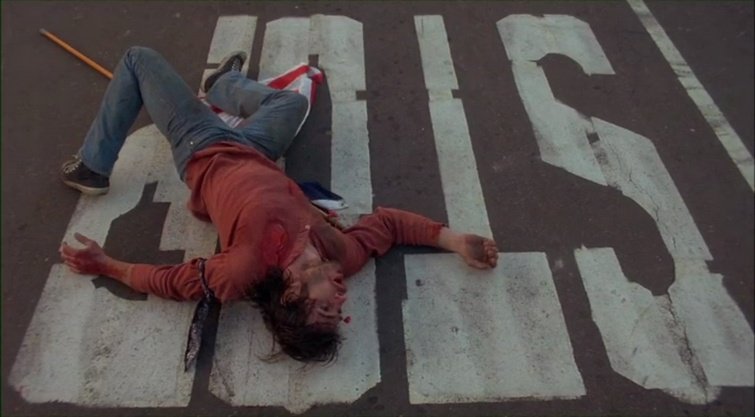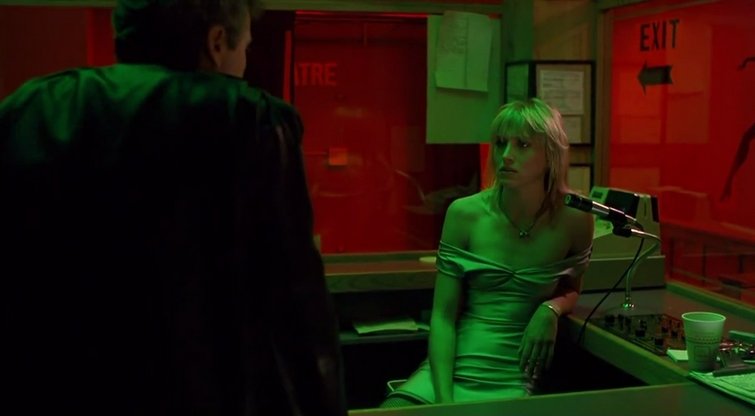-
Posts
30 -
Joined
-
Last visited
Posts posted by Malcolm Ian Vu
-
-
It's been quite a long time since I saw it, but I remember liking the first Hitman (2007) movie.
The newer one was terrible, though.
-
On 12/27/2023 at 9:54 AM, Joshua Echevarria said:
Could you share what this movie was? I’m working on a commercial and we are entertaining the idea of shooting anamorphic and cropping for 16:9 so I’d like to see a reference
He was likely referring to the 2012 film Promised Land, shot on the Hawk 1.3x lenses by Linus Sandgren.
-
They also made the Nikonos lenses which have perpendicular focus knobs.
Just to be thorough.
-
Film Photography Project has lots of Super 8 footage shot on modern stock that they've scanned themselves.
Obviously not a professional production, but you can at least see how the images look.
Here's some 50D:
And 200T:
-
The Wizard of Speed and Time
-
 2
2
-
 1
1
-
-
2 hours ago, Phil Rhodes said:
Traditionally this sort of thing would have had a cheesy blue-green moon backlight...
What?
That's what Dune is supposed to look like.

-
 1
1
-
-
It is unusual.
It's a very soft edge on top and bottom. You can even see through it at times, almost like thin fabric strips were placed in the gate (or perhaps a homemade painted gradient filter). It also completely opens up to full aspect ratio in one shot and then closes back down.
I know that it was heavily cut against his wishes. Maybe just a bungling editor and rushed cut.
I'm sure someone else here will have some insight.
-
 1
1
-
-
Malick's "A Hidden Life" displays deep focus in almost every shot.
-
The Sears lenses, much like VIvitar, were made by 3rd parties. The range is limited for primes 28/50/55/135/300 (that I know of), but there were also some zooms in between. Some of these lenses appear to be identical to ones made for other distributors. A 55/2.8 macro by Komine that also exists for Vivitar, for example. Most of them come in a variety of mounts. Historically, the Sears name kept the prices on these lenses very cheap. Some of them still are. But the 55/1.4 started going up in the past ten years.
There's a thread at the Pentax Forums where they know much more about these lenses.
I've owned the 135mm/2.8 Macro. It's more of an "art lens" in most situations (but still very cheap).
-
6 hours ago, Phil Rhodes said:
...what can we do for almost no money?
Well, the Kodak Signet 80 had its own set of glass. 35/3.5, 50/2.8, 90/4.
The 50 and 90 can be acquired cheaply on Ebay, usually on the camera. The 35 seems harder to come by.
The 50 and 90 are radioactive, so some level of discoloration is present in all examples.
I have no idea how you'd adapt and use these lenses, or if the quality is worth the trouble.
-
I'm still waiting for some crazy person to attempt using the Hasselblad X-Pan lenses (Fuji glass) for "large format" filmmaking.
I'm sure most competent directors could make do with 30/45/90mm.
-
 1
1
-
-
You could always dig up the Cinemiracle cameras from whatever ancient tomb they reside in.
Those ought to be able to run independently, with modifications. I believe each had their own motor and shutter, unlike the Cinerama system.
Assuming you could modify it for horizontal operation, that would give you a six perf negative, about 28mm x 25mm. That would make for a great mini-Imax format. Or shoot with Cooke 1.8x anamorphics and have a range of choices from 2:1 to 2.35:1.
There ought to be at least three of them somewhere in the world. Added bonus: Six perf projectors already exist (Cinerama) and were functional as recently as 2012. Not horizontal, though.
I have no idea what the operation of these cameras were like. Perhaps they were louder than a hydrogen bomb.
-
12 hours ago, Fiza Chughtai said:
I guess it was the other way around isn't it? 1.85 existed before 2.00:1, 1.85 wasnt wide and 2.39 was too wide, so Vittoria came up with 2:1
9 hours ago, Brian Drysdale said:2.00:1 was used by one process in the 1950s, but it never took off.
2:1 was used in 1930 on The Bat Whispers. Which was also the first usage of 65mm film.
-
9 hours ago, Tyler Purcell said:
A real film will have a tight script that is nearly identical to the finished product, save maybe a few deleted lines.
Terrence Malick has just dispatched Ninja Assassins to your location.
-
 2
2
-
 1
1
-
-
It's not nearly as old as you describe, but perhaps this is the book you were looking for.
"Special Effects: Wire Tape and Rubber Band Styles" (1984) by L.B. Abbott
Picture of the cover:
https://www.amazon.com/Special-Effects-Wire-Rubber-Styles/dp/0935578064
-
 1
1
-
-
6 hours ago, Carl Nenzen Loven said:
And also, has anyone ever made a black/white 65 mm stock? (clearly a VERY specific look but...)
CThe Bat Whispers (1930) was shot in a 65mm format, so yes.
-
-
That's why I said "mass market". If they were relying on sales of Super 8 film, they'd need to move a few million cameras. Only way to do that would be at ~$299.
-
-
Perhaps my subconcious mind was just fantasizing about Kodak needing to turn to another source of movie film revenue to keep operating. Like, oh I don't know... a new Super 8 camera for the mass market. But that's just crazy talk. :)
-
Without knowing the precise language of the contract, that first article doesn't really tell us anything.
Also, my post was really just a hypothetical. How long does Kodak live if they can no longer sell motion picture film? If they shut down, would that particular variant of movie-making cease to exist? Would another company fill the gap?
-
I was under the impression that the only reason Kodak still operates as a producer of motion picture film was because the major studios agreed to certain large purchases of film stock each year. I'm not sure if these are multi-year agreements. But if movie production ceases for a prolonged period, Kodak will have no customers. How long can they survive such a situation?
-
 1
1
-
-
I'm not entirely sure what you mean by "revolve on its axis". Do you mean like a flipping coin? If so, that's not going to look right if you only have the one image. Because of the perspective of the shot, the partial interior parts of the reel that are showing will not move correctly (well, not without a very heavy amount of work involving further art creation). Although if you just want it flipping around as a billboard, that could be done easily.
Rotation can be done with neary any image manipulation software. Even just frame by frame, like this:

Depending on how much time you wanted to spend on it, you could set the ramp up in acceleration with as much precision as you wanted. But, as Will noted, there are programs which have built-in processes for rotation animation.
I wonder, though, if you have considered a lo-fi approach. Like displaying your image on a tablet with a high resolution (or just a good quality paper print of it), putting it on a turntable and recording the footage above it while you hand-rotate it. Assuming you want to spend zero dollars and almost as little time and effort.
-
 1
1
-
-
If your actors wear contact lenses, some of the Acuvue UV-blocking contacts might help a bit in strong sunlight. The Oasys or Acuvue 2 lenses, perhaps. I don't know about their availability in France.






How many non-IMAX 15-perf cameras are there?
in IMAX
Posted
Is the Imax MSM the same camera as the Iwerks 1570?